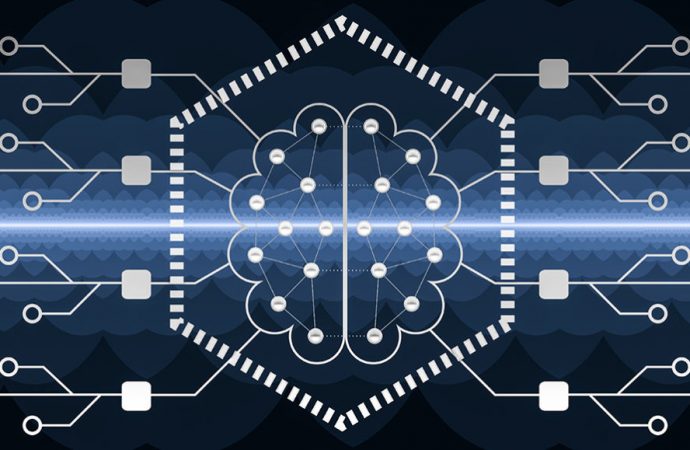This kind of algorithm could be used in testing air quality or diagnosing medical conditions
Source: Science News
When it comes to identifying scents, a “neuromorphic” artificial intelligence beats other AI by more than a nose.
The new AI learns to recognize smells more efficiently and reliably than other algorithms. And unlike other AI, this system can keep learning new aromas without forgetting others, researchers report online March 16 in Nature Machine Intelligence. The key to the program’s success is its neuromorphic structure, which resembles the neural circuitry in mammalian brains more than other AI designs.
This kind of algorithm, which excels at detecting faint signals amidst background noise and continually learning on the job, could someday be used for air quality monitoring, toxic waste detection or medical diagnoses.
The new AI is an artificial neural network, composed of many computing elements that mimic nerve cells to process scent information. The AI “sniffs” by taking in electrical voltage readouts from chemical sensors in a wind tunnel that were exposed to plumes of different scents, such as methane or ammonia. When the AI whiffs a new smell, that triggers a cascade of electrical activity among its nerve cells, or neurons, which the system remembers and can recognize in the future.
Like the olfactory system in the mammal brain, some of the AI’s neurons are designed to react to chemical sensor inputs by emitting differently timed pulses. Other neurons learn to recognize patterns in those blips that make up the odor’s electrical signature.
This brain-inspired setup primes the neuromorphic AI for learning new smells more than a traditional artificial neural network, which starts as a uniform web of identical, blank slate neurons. If a neuromorphic neural network is like a sports team whose players have assigned positions and know the rules of the game, an ordinary neural network is initially like a bunch of random newbies.
As a result, the neuromorphic system is a quicker, nimbler study. Just as a sports team may need to watch a play only once to understand the strategy and implement it in new situations, the neuromorphic AI can sniff a single sample of a new odor to recognize the scent in the future, even amidst other unknown smells.
In contrast, a bunch of beginners may need to watch a play many times to reenact the choreography — and still struggle to adapt it to future game-play scenarios. Likewise, a standard AI has to study a single scent sample many times, and still might not recognize it when the scent is mixed up with other odors.
Thomas Cleland of Cornell University and Nabil Imam of Intel in San Francisco pitted their neuromorphic AI against a traditional neural network in a smell test of 10 odors. To train, the neuromorphic system sniffed a single sample of each odor. The traditional AI underwent hundreds of training trials to learn each odor. During the test, each AI sniffed samples in which a learned smell was only 20 to 80 percent of the overall scent — mimicking real-world conditions where target smells are often intermingled with other aromas. The neuromorphic AI identified the right smell 92 percent of the time. The standard AI achieved 52 percent accuracy.
Priyadarshini Panda, a neuromorphic engineer at Yale University, is impressed by the neuromorphic AI’s keen sense of smell in muddled samples. The new AI’s one-and-done learning strategy is also more energy-efficient than traditional AI systems, which “tend to be very power hungry,” she says.
Another perk of the neuromorphic setup is that the AI can keep learning new smells after its original training if new neurons are added to the network, similar to the way that new cells continually form in the brain.
As new neurons are added to the AI, they can become attuned to new scents without disrupting the other neurons. It’s a different story for traditional AI, where the neural connections involved in recognizing a certain odor, or set of odors, are more broadly distributed across the network. Adding a new smell to the mix is liable to disturb those existing connections, so a typical AI struggles to learn new scents without forgetting others — unless it’s retrained from scratch, using both the original and new scent samples.
To demonstrate this, Cleland and Imam trained their neuromorphic AI and a standard AI to specialize in recognizing toluene, which is used to make paints and fingernail polish. Then, the researchers tried to teach the neural networks to recognize acetone, an ingredient of nail polish remover. The neuromorphic AI simply added acetone to its scent-recognition repertoire, but the standard AI couldn’t learn acetone without forgetting the smell of toluene. These kinds of memory lapses are a major limitation of current AI.
Continual learning seems to work well for the neuromorphic system when there are few scents involved, Panda says. “But what if you make it large-scale?” In the future, researchers could test whether this neuromorphic system can learn a much broader array of scents. But “this is a good start,” she says.
Source: Science News

































Leave a Comment
You must be logged in to post a comment.